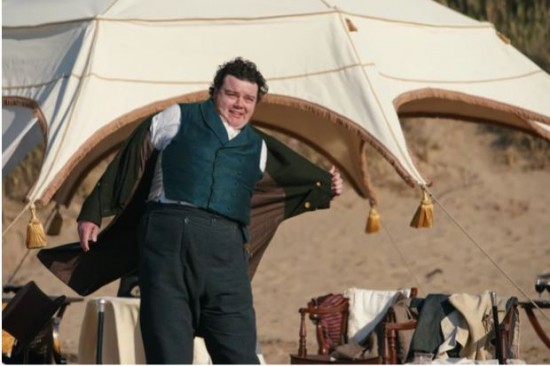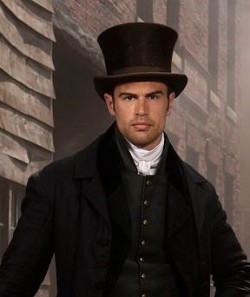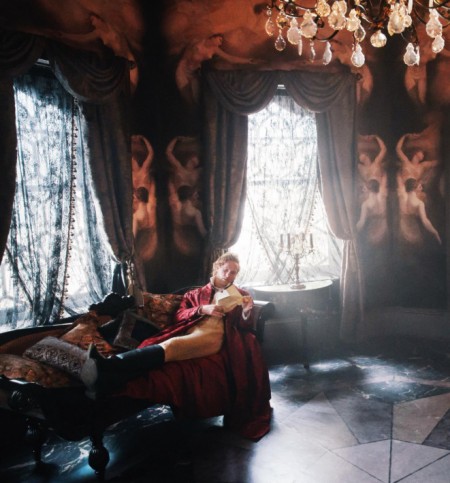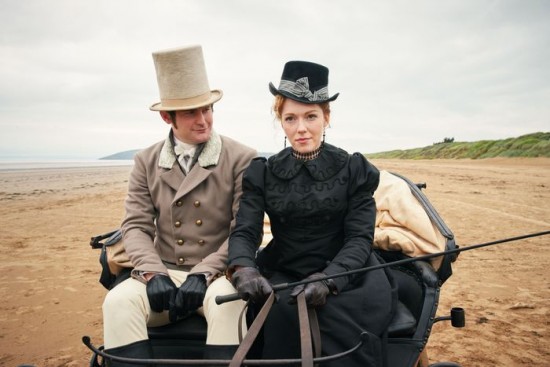“‘Hush! I am interrupted.’” That opening line from The Mystery, one of Jane Austen’s juvenile dramas, shows the author, from her youngest days as a writer, happy to make the inscrutable fragment part of her literary display (Juvenilia 71). It is therefore sadly fitting that her final work of fiction should be interrupted and left fragmentary. And also fitting that the first adaptation of the novel to be filmed should end up being cancelled at the end of its first season, with all its plot lines incomplete. The adaptation we are writing about is the one shown on Britain’s ITV in the fall of 2019 and on PBS’s Masterpiece in the U.S. in early 2020, with a continuation devised by Andrew Davies, the writer behind so many other high-profile Austen television serials.
Austen did not leave too much for him to work with. The fragment sets up characters ready to participate in the game of hypochondriacs and developers at a seaside resort, but the surviving dozen chapters give us little sense of how the game was to be played. Some possible points of conflict are raised:
1. The prosperity or failure of Sanditon—will families flock to the seaside resort? Will Tom Parker be able to rent out all those houses? Or will the competition win? The competition would be places like Brinshore, “‘that paltry hamlet, lying as it does between a stagnant marsh, a bleak moor and the constant effluvia of a ridge of putrifying sea weed’” (Later Manuscripts 143), as Tom describes it.
2. The competition for seventy-year-old Lady Denham’s money. Will Miss Clara Brereton, the poor relation from her side of the family, inherit? Or will it be the relations from her titled husband’s side—Sir Edward and his sister, Esther—who will carry away the prize?
3. The intentions of Sir Edward Denham toward Clara Brereton. Will Sir Edward succeed in his “great object in life,” which is to be “seductive” (183)? Will he mange to seduce that “complete heroine,” Clara Brereton (169), even though she sees through him and “had not the least intention of being seduced” (184)?
We might wish to add
4. The romantic prospects of Charlotte Heywood. Will she find true love in Sanditon? If so, with whom?
© Red Planet Pictures for ITV
It is probably more our sense of the usual course of an Austen novel that prompts us to see the last point as an issue. No reasonable hero to match with our main character has emerged, however, by the end of the seventy pages of Austen’s text. We may wish to see Sidney Parker as the hot prospect, as he is described as “‘a very clever young man, and with great powers of pleasing’” (158), the one who makes everyone in the family laugh, but he arrives so late on the scene that our championing of him has mostly to do with a lack of competitors.
Andrew Davies takes all Austen’s plot hints, runs with them, and adds more, as he must for a television serial. He had eight episodes to fill up for season one, with the hope of at least a second. Austen’s original material is exhausted before the end of the first episode. But Davies had other fish to fry.

Charlotte Heywood (Rose Williams) and Sidney Parker (Theo James).
© Red Planet Pictures for ITV
Background
Some thoughts about where Jane Austen’s Sanditon is coming from: we know that it was the last novel she worked on, starting the writing on 27 January 1817 but abandoning it about seven weeks later, on 18 March. She would die in four months.
Jane had probably been reviewing Northanger Abbey, recently retrieved from the publisher to whom she sold it in 1803. On 13 March 1817, she wrote to her niece Fanny Knight that her story about Catherine Moreland is “upon the Shelve.” Sanditon may have been an attempt to reuse some material from that novel. For example, Northanger Abbey’s interest in the new and the modern (Greenfield and Troost) persists in Tom Parker’s interest in developing a new resort town. Catherine Morland, an observant but gullible young lady from a very large rural family is replaced by Charlotte Heywood, slightly older, just as observant, and much less gullible, also from a large rural family. But both protagonists have parents happy to send them into the world on adventures. Henry Tilney is replaced with Sidney Parker, both younger sons and amusing satirists who gently delight in the follies of others. There is a visit in both to a resort: Bath is replaced by the seaside in the new work. Both settings allow for an opportunity to meet a variety of people of mysterious backgrounds. There is satire on language but updated: John Thorpe’s horse-and-carriage jargon is replaced by Sir Edward’s “newest-fashioned hard words” (LM 176), all hyper this and pseudo that. And, finally, the satire on novel-reading is also still there but now transferred to Sir Edward, who has read more sentimental novels than is good for him. As a result, he fancies himself another Robert Lovelace, the rake in Samuel Richardson’s celebrated novel Clarissa.
Jane has perhaps also been looking at her juvenilia. We see in the fragment of Sanditon their strong satiric tone, fast pacing, exaggeration, and similar preoccupations: getting and spending, hustling, eating and drinking. For example, any of the following would be in place in the juvenilia: Lady Denham’s extreme obsession with thrift, profit, and ass’s milk and her comic shock at the expense of a London hotel bill; Arthur Parker’s belief in the medicinal effects of copious glasses of wine, strong cups of cocoa, and well-buttered toast; Miss Diana’s officiousness with regard to bringing “‘two large families’” (164) to Sanditon—a school party from Camberwell and a West Indian family from Surrey, who end up being one and the same party; and Miss Diana’s faith in the curative powers of “‘friction, friction by the hand alone,’” provided one can keep at rubbing someone’s sprained ankle for “‘six hours without intermission’” (163). This is all satiric comedy and exaggeration worthy of Austen’s youthful writing.
What did Andrew Davies do with the fragment?
Like any adapter, Davies must fill in a lot of gaps, but usually there is also a lot of material to compress. Not this time: there is very little to work with since he is not using any of the existing continuations. Austen presented a setting and a slate of comic characters and offered up some excellent comic monologues. That’s about it. Davies would have to add the following: plot, conflict, and, most important, an ending. And he needed to shape the story into eight one-hour episodes with, hopefully, an additional eight episodes in a second season.
What important things from Austen informed his vision? The setting of a developing seaside resort, with all the bustle and excitement of building and promoting, Austen’s penchant for character development by misdirection, and the central role of Charlotte Heywood as interpreter and mis-interpreter of character. The first episode ends with a clear statement of this point, almost as if it is the thesis statement for Sanditon, the serial. At the first ball, Sidney asks Charlotte: “Penny for your thoughts, Miss Heywood.” And she gives them to him:
I was thinking how very hard it is to make people out. . . . I like to amuse myself by observing and try to make conclusions. In a place like Sanditon, where strangers mingle freely, it’s hard to form a reliable judgment. People can be so difficult to interpret, don’t you find?
Of course, in the quicker medium of television, with less time for reflection, Davies has to make Charlotte say straight out what Austen handles in inner monologue, but it is the same key point that Austen is making in in her fragment. Austen’s Charlotte doesn’t get people right at first and is often pulled off-target by the judgments of others and must mentally correct her initial impressions. The novel would clearly be about Charlotte’s developing judgment.
What does Davies change?
Davies adds a lot of visually interesting Regency material culture to satisfy our historical nosiness. We get bathing machines, regattas, cricket matches, masquerade balls, and regular balls. We get some remarkably interesting interiors in various houses and some fine views of the sea. We see elements of low culture, too: brothels, taverns, and pugilistic contests. He shows us Sanditon being built, from plans on the table, to maps, to building sites, to active construction. He gives us a wider swath of society, with attention given to both workers and the gentry as principal characters with back stories. He adds a lot more sex and quite a bit of male nudity while toning down Austen’s satire. Drama and romance hook readers better on screen than satire: if you want viewers to stick with eight episodes, they need to be emotionally engaged with the characters; satire keeps them at arm’s distance. He makes the characters more complex. Austen’s character sketches are fairly one-dimensional: she creates the conflict, the instability, in the changing perception of the characters by Charlotte Heywood. Davies places that instability into the characters, giving them contradictory natures, which he accomplishes by fleshing them out with experiences and attitudes reflective of our own twenty-first-century lives and values.

A signature feature of an Andrew Davies Austen adaptation. © Red Planet Pictures for ITV
The characters
The story of Sanditon is character driven. Austen gives us very amusing, satiric sketches. Davies, however, needs to fill in these sketches, round out these characters, and engage us emotionally with their concerns. How does that work? Almost everyone in Davies’s script gets competing concerns or interests, which lets them oscillate between them from episode to episode, creating conflict and driving the zigzagging plots. Let us start with the three brothers.
Tom Parker
Austen’s Charlotte is initially charmed by Mr. Tom Parker and takes him at his word when it comes to his opinion of the characters that he describes to her. In time, she comes to realize that “[h]is judgement is evidently not to be trusted.—His own good nature misleads him” (181). More than just a member of the landed gentry husbanding his estate, he is a modern entrepreneur enthusiastically pursuing real-estate development to bring good to himself and others. Austen approves of men of means having professions, though whether she entirely approves or disapproves of his obsession with Sanditon is unclear. She seems to regard it with humor:
Sanditon was a second wife and four children to him—hardly less dear—and certainly more engrossing.—He could talk of it forever.—It had indeed the highest claims;—not only those of birthplace, property, and home,—it was his mine, his lottery, his speculation and his hobby horse; his occupation, his hope and his futurity. (148)

Tom Parker (Kris Marshall) presides over his plan for Sanditon. © Red Planet Pictures for ITV
Her Tom Parker is a classic comic humor character straight out of an eighteenth-century play, endlessly optimistic and sanguine about success, reacting to everything in the same key.
Davies runs with this characterization but introduces a dark side of Tom’s personality. The “sanguine turn of mind” (148) that Austen gives him isn’t always turned on. The serial frequently depicts his awareness of his errors in judgment and the pressures of his financial problems through his frequent mood swings, from elation to despair. This Tom Parker is painfully aware of the possibility of failure but must maintain the cheerful front before investors. Not that he is fooling anyone. Esther Denham’s immoderate characterization of him—amid her first-episode rant against everyone and everything at Sanditon, even the scenery—underscores the gravity of his situation: “Mr. Tom Parker is a monomaniac who is on his way to ruining himself and his family with his crazy schemes. . . . You wait till he bankrupts himself.” And even Charlotte gets his measure early: she tells Sidney Parker in the first episode, “I’m afraid that, despite his good nature, he neglects his own happiness and his family’s in his passionate devotion to Sanditon.” At several points in the first season, it looks like both of these women are correct. He cannot pay his workmen, and the fire that destroys part of the town exposes that the property was not insured, causing ever greater financial turmoil for Tom. Even his wife is concerned, giving a more pessimistic version of Austen’s line: “My husband has two wives, Charlotte, myself and Sanditon, and I’d hesitate to say which of us he cares for most.”
But the truth is that Tom is not a monomaniac—he is a duo-maniac torn between his two loves. He is very much aware that his entrepreneurial activities can undermine his family, but he must keep up a good face and soldier on. It does make for a compelling plot line quite unlike those normally found in Austen and very much on point for the twenty-first century.
Arthur Parker
In Austen, Arthur provides a typical example of a contradiction between how he is first introduced to Charlotte and what she observes about him. Mr. Parker asserts that Arthur’s illness “‘really is no joke’” (162) and, once we meet him in chapter 10, Arthur describes himself as rheumatic and “‘very nervous’” (195) but also “‘very fond of exercise’” (196), though his exercise turns out to be no more than a short walk from town to his brother’s house and a few turns on the terrace. His constitution is fragile in the most spectacular way: green tea apparently “‘would act on me like poison and entirely take away the use of my right side, before I had swallowed it five minutes.—It sounds almost incredible—but it has happened to me so often that I cannot doubt it.—The use of my right side is entirely taken away for several hours!’” (199). Another exaggerated detail in the style of the juvenilia.
And his methods of self-medication are novel. He needs to “secure the coats of his stomach” by buttering his toast—lavishly: “Charlotte could hardly contain herself as she saw him watching his sisters, while he scrupulously scraped off almost as much butter as he put on, and then seize an odd moment for adding a great dab just before it went into his mouth.” Charlotte finally gets his measure and decides he is “determined on having no disorders but such as called for warm rooms and good nourishment” (198).
Davies’s version of Arthur remains comic—he has no dark depths—but the contradiction is more within Arthur rather than in how characters perceive him, and his actions oppose his claims of necessary inactivity. Davies’s Arthur, unlike Austen’s, is not a hypocrite. He is just someone who changes his mind easily. When we first meet him, he insists, looking serious, that “I thought I’d never leave my bed,” and he calls sea-bathing “madness.” In the gentlemen’s sea-bathing scene, however, while at first he lets Sir Edward and Tom Parker go into the water, saying that he’ll “just watch and look after the clothes,” within a few seconds he utters an, “Oh, damn it,” strips off his shirt and trousers, and plunges in, unself-conscious about his plodgy body. In fact, when we see the three men together, it is Arthur who swims by vigorously, while his brother comments, “My brother is a very unexpected man.”

Arthur Parker (Turlough Convery) prepares to join his brothers in some sea bathing.
© Red Planet Pictures for ITV
Charlotte’s summary of his behavior to Sidney at the first Sanditon ball seems on the mark: “It seems to me your younger brother Arthur is a very contrary nature, alternately over-lethargic and over-energetic”—while we see Arthur dancing with Miss Lambe in a most energetic fashion. Yet by the second episode he is panting heavily on his way up the hill to Lady Denham’s party. The contrary nature is within Arthur, but as the series progresses, he stops hiding behind the mask of invalidism as he comes out of his shell.
Sidney Parker

Sidney Parker (Theo James) looks Byronic and brooding.
© Red Planet Pictures for ITV
In the Davies version, Sidney is rude, brooding, and Byronic, not remotely like what Austen sets up. Several reviewers noted that he was clearly the “Darcy” character—that is, Andrew Davies’s version of Mr. Darcy from the 1995 Pride and Prejudice (see Bahr for an example). Davies even has Sidney Parker do a similar wet-shirt scene—minus the shirt this time. As Davies told the New York Post, “People seemed to like it before, so I thought ‘Let’s do it again’” (qtd. in Sarner). But mostly, Sidney Parker broods.
Sidney is torn between devotion to his brother Tom and the Sanditon project, on the one hand, and his personal desires, on the other. And those two impulses are at odds with each other. Like Charlotte, he has difficulties reading character—her character, in particular. He ignores Charlotte when first meeting her, assuming she is another gold-digger (like the one who broke his heart so many years ago), but dances with her at the ball and asks for her “thoughts.” He then insults her when she gives them: “And upon what experience of the world do you form your judgments? Where have you been? Nowhere. What have you learnt? Nothing, it would seem, and yet you take it upon yourself to criticize.” And that’s just the first episode.
Nevertheless, he finds himself attracted to her after she has seen him sea-bathing naked and decides she is competent when she provides exemplary first aid to Old Stringer after a serious accident on the building site. Then he decides she is incompetent when she helps Miss Lambe escape to London. His opinion changes to being impressed by her again when she pursues Miss Lambe with him into the seamy parts of London and across the country roads of England. Ultimately, he falls in love with her, telling her, “I believe I am my best self, my truest self, when I’m with you.” Then he turns around and offers his hand in marriage to another woman for her money—to save Sanditon.
The inconsistency here comes in Sidney’s devotion to family and duty played against his personal desires. At the end of the season, duty to family wins: he sells himself in marriage to raise the money Tom needs to rebuild after the fire. Very noble indeed. Clearly, he also has some dark corners in his soul that were to be developed in a second season: what was he doing in Antigua? Was he, at some earlier date, involved in the slave trade? How did he end up as Miss Lambe’s highly resented guardian? Interesting questions that will not be answered.
Miss Lambe
Speaking of which, there is Miss Lambe, a character for a modern, multicultural world. Austen doesn’t give us too much about her: she is “chilly and tender,” whatever that means, and “half mulatto” (202), quite a change from Austen’s usual cast of Caucasian characters.

Miss Lambe (Crystal Clarke) plots an escape from her guardian.
© Red Planet Pictures for ITV
Davies gives her a back story: she is the daughter of an Antiguan plantation owner and one of his enslaved women. She is an heiress, as she was in Austen, but Davies’s character is also political, very outspoken on social issues concerning people of color and the position of women. She would be very much in place in our century. At Lady Denham’s pineapple party, she gives as good as she gets and in Caribbean patois, to give everyone a good shock.
But, like so many in Sanditon, she has contradictory impulses: a desire for independence from her guardian and men in general, on the one hand, and love for the invented character Otis Molyneux, from whom Sidney has parted her by making her leave London and come to Sanditon. As the season winds up, Otis places Georgiana Lambe’s desires in the greatest possible conflict by seemingly selling her—or trying to sell her—into a forced marriage to pay off gambling debts. Clearly, her story arc would have played a major role in the second season, though how isn’t clear: perhaps Otis would have redeemed himself somehow, and Georgiana would have joined him in abolitionist activities.
James Stringer
Another character for the modern world. Austen merely mentions Stringer and his son, newly set-up market gardeners who supply the town of Sanditon with fresh fruit and vegetables. Davies fleshes out young James, a working-class character of the kind not normally playing a major role in an Austen novel, and connects him to Sanditon by having him work as a builder and would-be architect for the town.
James, too, has competing concerns that shape his character. Young James is a modern man anxious to transcend his social class and rise in the world, which means going to London. That, however, would mean going against the wishes of his old-school father, who wants him to stay in his place, stay in Sanditon, and carry on his father’s trade. On top of that, Davies positions him as a competing love interest for Charlotte Heywood, who has attracted his attention by conversing with him knowledgably about architecture and building and who seems to be eager to overlook their differing social stations. He is an earnest, engaging character, but likely to experience nothing but heartbreak and disappointment.
Sir Edward Denham and Esther Denham
Austen made these two siblings comic characters, whom Charlotte quickly learns to dismiss after initial misperceptions. Sir Edward proves to be a buffoon or, as Austen’s Charlotte notes, “downright silly” (176). Esther’s snobbish conduct—cold and reserved to the Parkers but full of “smiling attention” and “solicitous eagerness” toward Lady Denham—is dismissed by Austen as “very striking—and very amusing—or very melancholy, just as satire or morality might prevail” (174). Neither character, now reduced to half-siblings, is amusing in this adaption. It’s high drama with both, and they take the adaptation in a modern direction that the typical Austen serial or film steers clear of.
Sir Edward’s creepy, sexualized relationship with his half-sister, Esther, is a #MeToo moment. It is a painfully timely topic for the modern viewer, but it has its historical roots, too. Lord Byron’s relationship with his half-sister, Augusta Leigh, went considerably further than that of the Sanditon half-siblings, and Davies notes that he got the idea from other novels from Austen’s time (O’Keefe). But Edward’s desire for the inheritance dominates over other desires. He gets his come-uppance at the hands of the women he tries to manipulate (Esther, Clara, and Lady Denham), and he loses his chance at the inheritance. There is some justice.

Sir Edward Denham (Jack Fox) looks louche. © Red Planet Pictures for ITV
We also get to see his victim, Esther, gradually free herself from his predatory spell, once she finally understands that he is more interested in the money than in her. We see her heal psychologically and allow self-worth to triumph over self-loathing. And she makes a good marriage. Lady Denham has been pushing Lord Babington at her since the beginning of the series: her candidate is a good one, and Esther is lucky to get him. Babington is a modern man: sensitive, forgiving, and willing to let Esther take the reins, both literally and, we assume, metaphorically.

Esther Denham (Charlotte Spencer) takes the reins from Lord Babington (Mark Stanley).
© Red Planet Pictures for ITV
Clara Brereton
Austen has Mr. Parker describe Clara as “lovely, amiable, gentle, unassuming, conducting herself uniformly with great good sense, and evidently gaining by her innate worth on the affections of her patroness” (153–54). Austen’s Charlotte “had never beheld a more lovely, or more interesting young woman. . . . Perhaps it might be partly owing to her having just issued from a circulating library—but she could not separate the idea of a complete heroine from Clara Brereton” (168–69). Austen has Charlotte continue musing in this vein. It would be better novelistically, of course, if Lady Denham, to whom Clara is companion, were mistreating her, “and while [Charlotte] pleased herself the first five minutes with fancying the persecutions which ought to be the lot of the interesting Clara, especially in the form of the most barbarous conduct on Lady Denham’s side, she found no reluctance to admit, from subsequent observation, that they appeared to be on very comfortable terms” (169).
But we know that first impressions in Austen’s fragment do not follow through. So does Andrew Davies, though his transformation is more dramatic that Austen’s is likely to have been. Davies converts Lady Denham’s poor relation into a villain. But we also get a complex back story for her to explain how she became the person she is. A victim of childhood incest—an uncle was the predator—Clara has learned to protect herself and has become wily, dishonest, and determined to advance herself with Lady Denham at any cost in order to achieve security, even to the point of self-injury and seduction. Like Edward and Esther, she fights inner demons; like Edward, she overplays her hand and loses all.
The future
Where was this serial headed? Farther and farther from typical Austen, to be sure, which probably had a lot to do with its lack of success. It took period drama in an interesting direction but not necessarily one that Austen fans might have wanted. Nor was it Davies’s best work. In fact, he did not even write all the scripts himself (Sheridan 130–31). The three-writer team allowed plotlines and characters to develop on their own and hubristically tried to stretch the multiple narratives to allow for a second season, often leading to a lack of focus. Sidney’s engagement to the wrong woman at the cliffhanger end of the season was not the conclusion that fans of the show wanted—and there are over eleven thousand of them in the private Facebook group Sanditon devoted to the series still regularly posting about this “wrong ending.”
But Sanditon the serial, like Austen’s novel, was “interrupted.” It was cancelled in December 2019 for not having a sufficient audience. When Sanditon premiered on ITV on August 26, 2019, over 5 million people were watching; the season finale pulled under 4 million (Elliott). That sounds like a lot—many viewers really did like the serial—but compare that to ITV’s other dramas: its top six last year had 6½ to 8½ million viewers per episode (“ITV”). Sanditon was not close. Davies has also suspected that ITV had “sort of gone off doing period drama” after the pointed lack of success of the previous season’s Vanity Fair (Ling, “Sanditon cancelled”). ITV did not want to take more risks after Sanditon did not prove another Pride and Prejudice, which, by the way, pulled 10 million viewers for its first episode.
If a second season is ever produced—and there are rumors about that possibility despite statements to the contrary (Ling, “Sanditon series”)—expect more of the same: less Northanger Abbey and more Downton Abbey, less game of wit and more game of thrones. And future Austen adaptations may well be less “light, bright, and sparkling.” In 2017, it was announced that Nina Raine, screenwriter for the Poldark series, has been tapped for a “darker” version of Pride and Prejudice for ITV (Ruddick). It was planned for 2020, the silver jubilee of the famous Pride and Prejudice miniseries that started it all. But we have heard nothing about it in recent months, and Sanditon’s interruption may have derailed the project. Just as well. After the calamities of 2020, we may want the Jane Austen from the old adaptations back. We just may not be up for regency noir.
